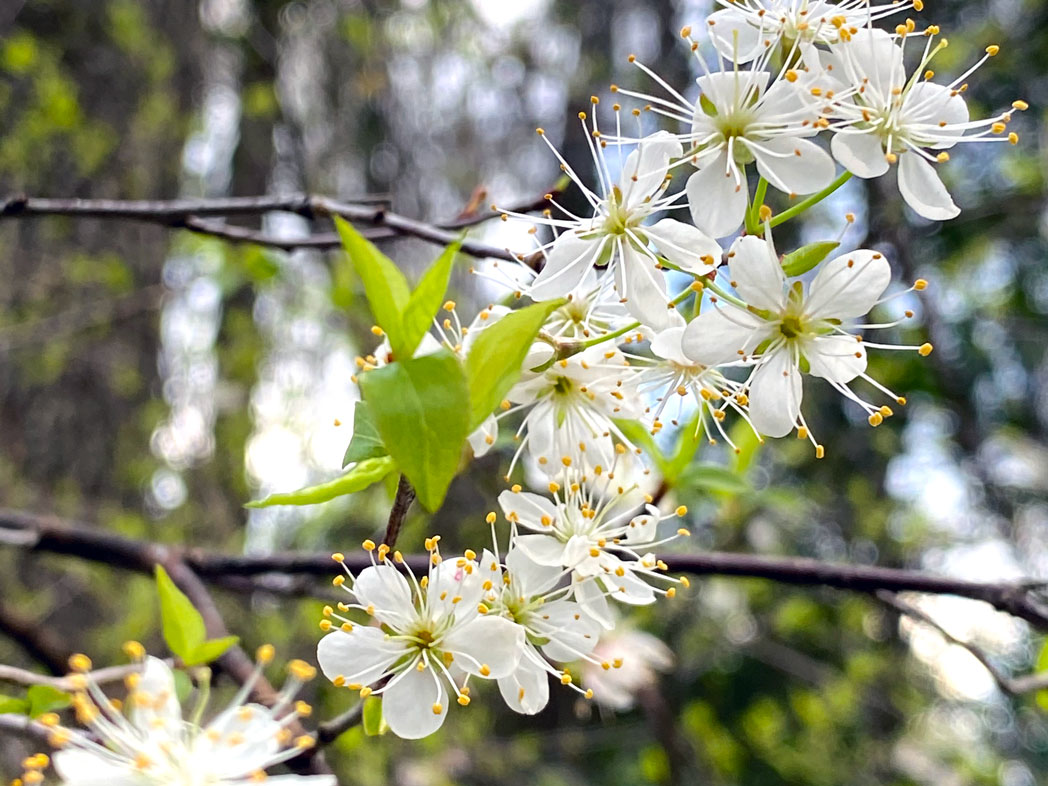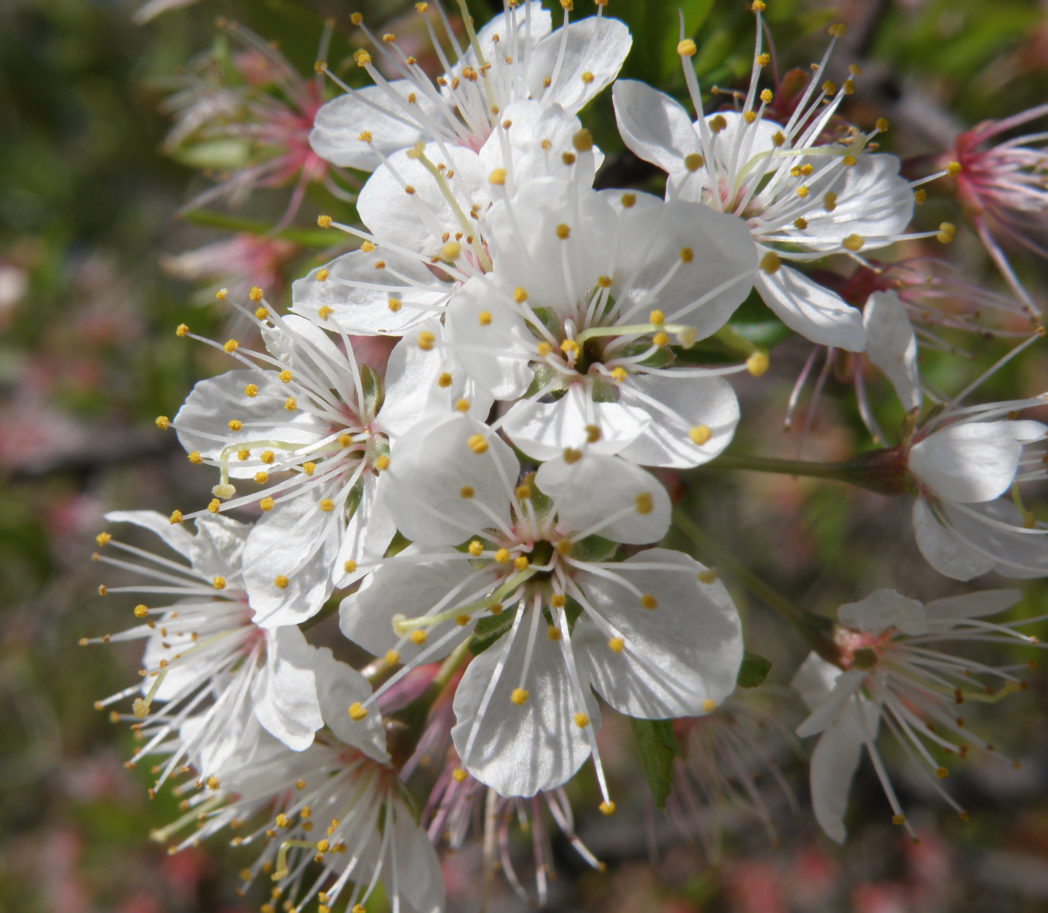Flatwoods plum
Pictured above: Flatwoods plum (Prunus umbellata) by Grace Howell. Click on terms for botanical definitions. View post as a PDF.
Flatwoods plum is a deciduous large shrub to small tree found in hammocks and woodlands throughout North and Central Florida. It typically blooms in March, at which time the entire crown is covered in umbels of delightful white flowers that attract a variety of pollinators, especially bees. The bloom time is short, lasting only a month or so, but leads to an abundance of summer and fall fruits that provide food for birds and other wildlife. The plums are also edible to humans, but tend to be more bitter than sweet and are best made into a jam or jelly. The plant contains trace amounts of cyanogenic compounds, with higher concentrations in the leaves and seeds. These compounds can be toxic if ingested in large quantities. It is recommended that seeds be removed from the fruits before consuming.
Flatwoods plum flowers are five-petaled and white with many obvious yellow anthers. Leaves are simple, ovate to elliptic and 1 to 2 inches long with serrate margins and alternate arrangement. They turn yellow in fall before dropping. The trunk is often bent or curved. Fruits are cherry-like yellow to reddish drupes that turn purple to black when mature. Their skin is glaucous.
It is often confused with its cousin, Chickasaw plum (P. angustifolia). To distinguish, look for glands at the tips of leaf margin serrations, which are present in Chickasaw, but absent in Flatwoods. Chickasaw plum also tends to flower a bit earlier.
Flatwoods plum is also known as Hog plum, a reference to its historic use as a livestock food. The species epithet umbellata refers to the umbellate or umbrella-shaped flower clusters.
Family: Rosaceae (Rose family)
Native range: Panhandle, north and central peninsula
To see where natural populations of Flatwoods plum have been vouchered, visit florida.plantatlas.usf.edu.
Lifespan: Perennial
Soil: Dry to moist, well-drained, acidic or alkaline clay, sandy or loamy soils
Exposure: Full sun to partial shade
Growth habit: 10–20’ tall; crown with equal spread
Propagation: Seed (must be stratified)
Florida regions of landscape suitability: North, Central
Garden tips: Unlike Chickasaw plum, Flatwoods plum typically does not sucker or form thickets, making it suitable as a specimen or accent plant. However, the two species can hybridize. Flatwoods plum does best in moist soils with afternoon shade, but is tolerant of drier soils and sun.
Flatwoods plum is often available at nurseries that specialize in native plants. Visit PlantRealFlorida.org to find a native nursery in your area.
Learn more about Flatwoods plum from the Florida Native Plant Society and the Institute for Regional Conservation.
For information on other Prunus species, see these resources:


